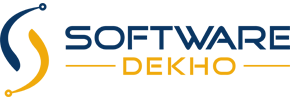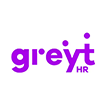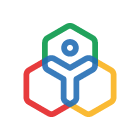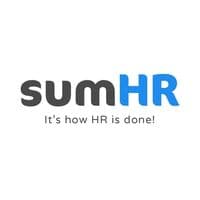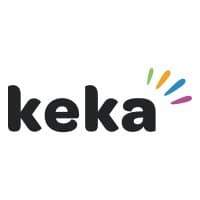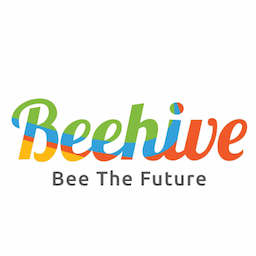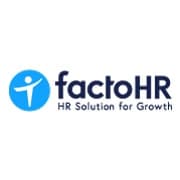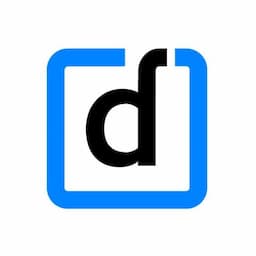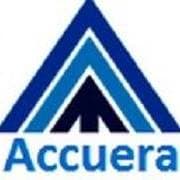Best HR Software in India
We're here to assist!
Explore 20 Best HR Software in India for 2024

Quikchex
An easy to use one stop HRMS that automates your complete employee lifecycle.
Quikchex simplifies payroll and employee management for Indian SMBs with an affordable solution. With a beautifully designed interface, HR, Finance, and Payroll Managers can process payroll, leave, an...
Check Quikchex Profile
Officenet
Cloud Based HR Solution For Mid & Large Size Enterprises
Officenet HR Solution delivers world-class cloud and on-premise HR cum payroll solutions to leading organizations on a PAN India basis. Officenet It includes a variety of features ranging from leave, ...
Check Officenet Profile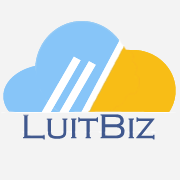
LuitBiz HRM & ESS
Business Applications Suite
LuitBiz HRM & ESS is a robust and feature rich SaaS HR Software with no download, installation, maintenance or upgrading required. LuitBiz HRM enables all companies to manage their HR process over the...
Check LuitBiz HRM & ESS Profile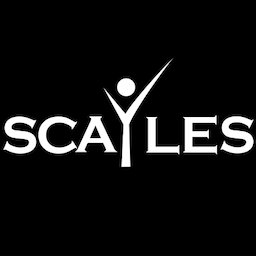
Scayles Payroll & Compliance
Payroll and Compliance software
Scayles Payroll & Compliance Software Payroll Management Software helps with Statutory compliance & management,Document Management,Leave Management and Payslips & Reports. It also assists in Bulk Tra...
Check Scayles Payroll & Compliance ProfileWhat is HR Software?
Efficiently managing your workforce is the lifeblood of any successful organization in today's competitive landscape. Enter HR software, a powerful digital solution designed to simplify and automate various aspects of people management, ultimately enabling businesses of all sizes and across all industries to unlock strategic advantages. But what exactly is it?
Simply put, HR software is a technological tool that removes the manual from HR processes, streamlining tasks from employee onboarding and payroll to performance management and talent development. Imagine a centralized hub for all your HR needs, replacing cumbersome paperwork and time-consuming routines with user-friendly interfaces and data-driven insights.
Different types of HR software cater to specific needs. Core HR solutions handle essential functionalities like employee data and attendance tracking, while talent management systems focus on recruitment and onboarding. Learning & development platforms, on the other hand, help companies equip their employees with the skills they need to thrive.
Implementing HR software delivers substantial benefits. Automated workflows boost efficiency, streamlined processes save valuable time and resources, and centralized data management ensures accuracy and accessibility. Moreover, insightful reporting and analytics empower better decision-making, and enhanced communication and transparency contribute to a more engaged and productive workforce.
Whether you're a small business owner, a seasoned HR professional, or a payroll specialist, HR software can revolutionize your approach to people management. As you delve deeper into this guide, you'll discover how specific solutions can address your unique needs and propel your organization toward a brighter future.
Why Does Your Business Need HR Software?
Imagine dealing with manual HR tasks, handling spreadsheets, and facing scattered information across different parts of your company. Unfortunately, these are common challenges for many businesses. But what if there was a solution that could make things easier, make your work smoother, and help your team? That's what HR systems are all about.
So, what are HR systems? They're like super helpful tools designed to manage and improve different parts of human resource tasks. From keeping track of employee details to sorting out pay, HR systems act as a kind of central hub. They bring everything together and make managing your workforce more straightforward.
Let's look at some good reasons why your business, no matter its size or industry, could benefit a lot from using HR systems.
1. Eradicating Manual Headaches:
Say goodbye to mountains of paperwork and time-consuming administrative tasks. HR software automates repetitive processes like payroll processing, performance reviews, and leave management, freeing up valuable time for your HR team to focus on strategic initiatives.
2. Embracing Data-Driven Decisions:
Accessing reliable and centralized employee data has never been easier. HR software provides robust reporting and analytics, allowing you to make informed decisions based on real-time insights into your workforce. Imagine identifying performance trends, analyzing talent gaps, and predicting future needs with confidence.
3. Enhancing Employee Experience:
From seamless onboarding experiences to transparent communication channels, HR software fosters a positive work environment for your employees. Features like self-service portals, mobile access, and personalized feedback mechanisms contribute to improved employee engagement and satisfaction.
4. Ensuring Compliance:
Navigating complex legal and regulatory requirements can be overwhelming. HR software helps you stay compliant with labor laws, tax regulations, and data privacy standards by providing automated reminders, integrated reporting tools, and access to relevant resources.
5. Fostering a Culture of Growth:
Attracting and retaining high-caliber talent hinges on the availability of robust learning and development prospects. HR software can facilitate talent development initiatives by providing training modules, performance management tools, and career pathing functionalities, empowering your employees to reach their full potential.
The impact of HR software goes beyond mere efficiency gains. It fosters a culture of collaboration, transparency, and growth, ultimately contributing to a more productive and successful organization. Ready to explore how specific HR solutions can address your unique challenges and unlock new possibilities? Dive deeper into the guide to discover your path toward an empowered workforce and a thriving business.
How Does the HR System Work?
Envision a well-organized system where employee information flows seamlessly across departments, tasks are efficiently handled, and valuable insights support strategic decision-making. This smooth coordination is the core of an effective HR system. Now, let's explore how it functions.
Think of the HR system as a centralized platform that consolidates various components and functionalities, simplifying the management of crucial human resources information.
1. Employee Data Management:
The foundational module stores accurate and secure information about your workforce, including demographics, contact details, employment history, and performance data. This centralized hub eliminates data silos and facilitates informed decision-making.
2. Payroll Processing:
Say goodbye to manual calculations and errors. HR systems automate payroll processing, ensuring accurate and timely payments for your employees, while adhering to complex tax regulations and compliance requirements.
3. Performance Management:
Foster a culture of continuous improvement with performance management tools. Set goals, track progress, provide feedback, and conduct performance reviews – all within the system, promoting employee engagement and development.
4. Learning & Development:
Equip your team with the expertise essential for success. HR systems can house training resources, oversee learning journeys, and monitor advancements, guaranteeing your workforce stays abreast of changes in a swiftly evolving environment.
5. Recruitment & Onboarding:
Attract top talent and streamline the onboarding process. Use the system to post job openings, manage applications, conduct interviews, and onboard new hires efficiently, creating a positive experience from the start.
Must Read: The Ultimate Guide To Employee Recruitment Process
6. Time & Attendance Management:
Keep track of working hours accurately and effortlessly. Employees can clock in and out electronically, managers can approve timesheets, and you can gain valuable insights into workforce utilization and patterns.
7. Reporting & Analytics:
Gain valuable insights into your workforce with robust reporting and analytics tools. Analyze trends, identify areas for improvement, and make data-driven decisions to optimize your HR strategies.
But remember, an HR system is only as powerful as its implementation. Security and data privacy are paramount, so choosing a system with robust security features and adhering to compliance regulations is crucial.
Ready to delve deeper into specific system functionalities and discover how they can transform your HR processes? Explore further in this guide to unlock the full potential of modern HR technology.
What are the Different Types of HR Systems?
With a diverse range of HR software options available, choosing the right system can feel overwhelming. But fear not! Understanding the different types of HR systems based on their functionalities will help you identify the perfect solution for your specific needs. Let's embark on a guided tour:
1. Core HR Systems:
These form the essential foundation of HR management, handling core functionalities like employee data management, payroll management, time & attendance tracking, and basic reporting. They're ideal for small and medium businesses seeking to streamline core HR processes and ensure compliance.
2. Talent Management Systems:
Go beyond basic HR with talent-centric solutions. These systems focus on attracting, retaining, and developing top talent through functionalities like recruitment management, applicant tracking, onboarding tools, performance management, and learning & development modules. They cater to organizations of all sizes seeking to build a strong talent pipeline and foster employee growth.
3. Learning & Development Systems:
Invest in your workforce's future with dedicated learning platforms. These systems offer a comprehensive suite of features like course management, online learning tools, skill assessments, and personalized learning paths. They're ideal for organizations of all sizes committed to employee development and upskilling initiatives.
4. Recruitment & Onboarding Systems:
Optimize your talent acquisition process with specialized recruitment software. These solutions streamline job postings, manage applications, facilitate interviews, and automate onboarding workflows. They cater to organizations with high hiring volumes or seeking to improve the candidate experience.
5. Workforce Management Systems:
Gain deeper insights and optimize your workforce utilization with these comprehensive solutions. They combine functionalities like time & attendance management, scheduling, leave management, and project management, offering valuable data and analytics for organizations of all sizes to optimize workforce deployment and costs.
Must Read: How HR Software Cuts Operational Costs?
6. Compensation & Benefits Management Systems:
Simplify and streamline compensation and benefits administration with dedicated software. These systems automate tasks like salary calculations, bonus payouts, benefits enrollment, and compliance reporting, improving accuracy and efficiency for organizations of all sizes.
Remember, this is just a starting point. Many HR systems offer combinations of these functionalities, and specialized solutions exist for specific industry needs. Explore further in this guide to delve deeper into individual system types, discover their key features, and identify the perfect fit for your unique requirements.
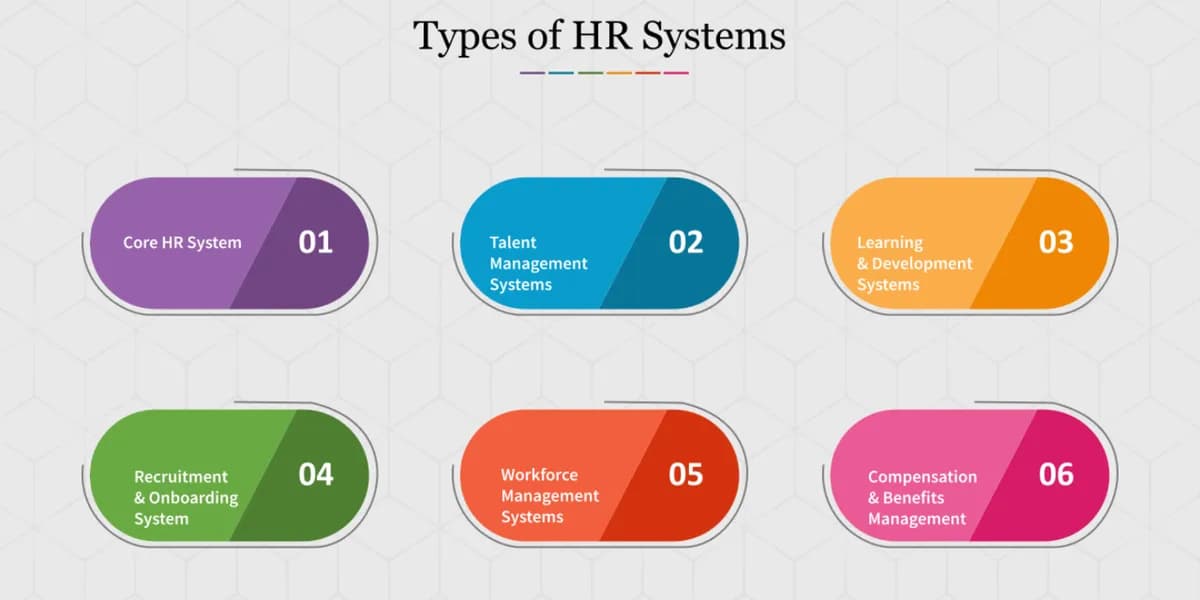
What are the Benefits of HR Software?
Implementing HR software isn't just about ticking boxes; it's about unlocking a treasure trove of benefits that empower your organization to thrive. Let's explore some of the most compelling advantages offered by the best HR software in India that can transform your HR practices:
1. Enhanced Efficiency:
Say goodbye to time-consuming manual tasks and embrace automation. HR software streamlines core processes like payroll, attendance tracking, and onboarding, freeing up your HR team's valuable time to focus on strategic initiatives. Imagine the possibilities when your team can devote more energy to talent acquisition, employee engagement, and building a thriving work culture.
2. Improved Data Accuracy and Accessibility:
Eliminate data silos and ensure reliable, centralized access to employee information. HR software offers a single platform for storing and managing employee data, guaranteeing accuracy and accessibility for authorized personnel across departments. This empowers informed decision-making based on real-time insights, ultimately leading to better outcomes for both the organization and its employees.
3. Optimized Compliance Management:
Navigating complex legal and regulatory requirements can be a daunting task. HR software assists with compliance by providing automated reminders, integrated reporting tools, and access to relevant resources. This helps your organization stay ahead of the curve, mitigate risks, and ensure adherence to labor laws, tax regulations, and data privacy standards.
4. Fostered Employee Engagement and Experience:
From seamless onboarding experiences to transparent communication channels, HR software empowers you to create a positive and engaging work environment for your employees. Features like self-service portals, mobile access, and personalized feedback mechanisms contribute to improved employee satisfaction, loyalty, and ultimately, better performance.
5. Data-Driven Decision Making:
Stop relying on gut feeling and embrace the power of data. HR software provides robust reporting and analytics tools, allowing you to make informed decisions based on real-time insights into your workforce. Imagine analyzing talent gaps, predicting future needs, and identifying trends in employee performance – all with the click of a button.
6. Reduced Administrative Burdens:
Free your HR team from tedious administrative tasks like paperwork and manual data entry. HR software automates these processes, allowing your team to focus on what truly matters – fostering a positive work environment and nurturing your most valuable asset: your people.
7. Cost Savings and Increased ROI:
While implementing HR software may seem like an initial investment, the long-term benefits quickly outweigh the costs. Improved efficiency, reduced administrative burdens, and data-driven decisions can lead to significant cost savings and a substantial return on investment for your organization.
These are just a glimpse into the transformative power of HR software. As you delve deeper into this guide, you'll discover how specific HR solutions can address your unique challenges, empower your people, and propel your organization towards a brighter future.
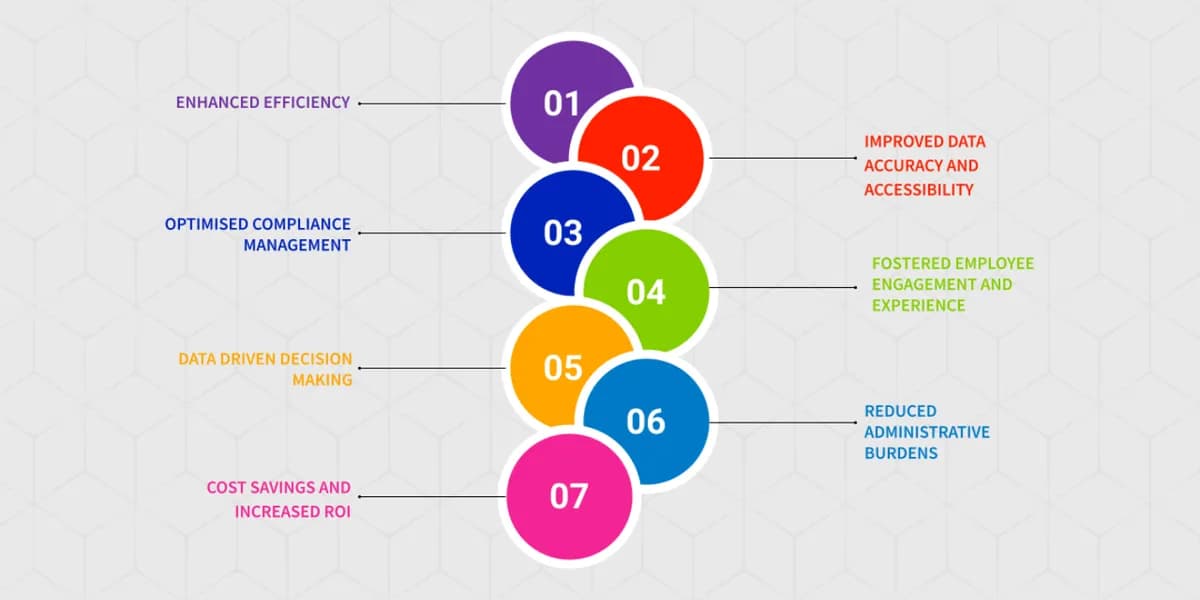
What are the Features of HR Software?
Equipping Your HR Team with Powerful Tools
Now that you've explored the transformative potential of HR software, let's delve deeper into the specific HR management features that power its magic. Remember, the features available will vary depending on the type of HR system you choose, but here are some of the most common and impactful ones:
1. Employee Data Management:
This core feature stores and manages crucial employee information like demographics, contact details, employment history, and performance data. Imagine a centralized hub where authorized personnel can easily access and update employee records, ensuring data accuracy and accessibility.
2. Payroll Processing:
Eliminate manual calculations and errors with automated payroll processing. Ensure accurate and timely salary payments for your employees while adhering to tax regulations and compliance requirements. Features like direct deposit and automated tax calculations simplify this crucial function.
3. Performance Management:
Foster a culture of continuous improvement with performance management tools. Set goals, track progress, provide feedback, and conduct performance reviews – all within the system. Imagine managers gaining insights into employee strengths and areas for development, leading to enhanced performance and engagement.
4. Learning & Development:
Invest in your workforce's future with learning management features. Offer training materials, manage learning paths, and track progress. Empower employees to upskill and stay ahead of the curve, contributing to a more adaptable and future-proof organization.
5. Recruitment & Onboarding:
Attract top talent and streamline the onboarding process with recruitment tools. Post job openings, manage applications, conduct interviews, and onboard new hires efficiently. Create a positive first impression and ensure new employees feel welcome and prepared to contribute from day one.
6. Time & Attendance Management:
Keep track of working hours accurately and effortlessly with time and attendance features. Employees can clock in and out electronically, managers can approve timesheets, and you gain valuable insights into workforce utilization and patterns. Optimize scheduling and resource allocation for better efficiency.
7. Reporting & Analytics:
Gain valuable insights into your workforce with robust reporting and analytics tools. Analyze trends, identify areas for improvement, and make data-driven decisions to optimize your HR strategies. Imagine proactive talent management based on real-time insights into employee engagement, skills gaps, and performance trends.
8. Self-Service Portals:
Empower employees with self-service options. Update personal information, request leave, access payslips, and submit feedback – all on a user-friendly portal. Reduce administrative burdens on your HR team and enhance employee autonomy.
9. Mobile Access:
Stay connected and productive on the go with mobile app access. Approve timesheets, access paystubs, and connect with colleagues – all from your smartphone or tablet. Enhance flexibility and employee engagement regardless of location.
10. Integrations with Other Systems:
Connect your HR software seamlessly with other existing systems like finance, accounting, and project management. Streamline workflows, eliminate data duplication, and ensure data consistency across platforms for improved efficiency and decision-making.
Remember, these are just a starting point. As you explore specific HR solutions, delve deeper into the features they offer and how they align with your unique needs and business goals. Choose a system that empowers your HR team, unlocks efficiency, and propels your organization toward a future of empowered employees and strategic workforce management.
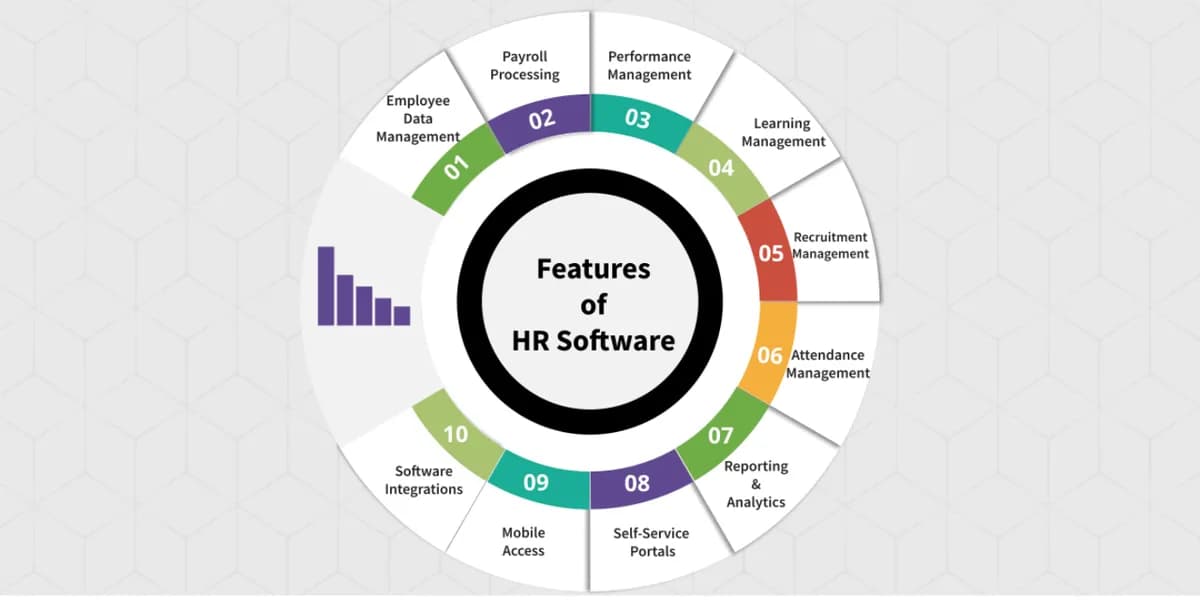
How to Choose the Right HR Software for Your Business
Selecting the perfect HR software for your business can feel like finding a needle in a haystack. With countless options boasting seemingly identical features, the decision can be overwhelming. But fear not! This guide empowers you to navigate the vast HR software landscape and identify the solution that seamlessly integrates with your unique needs and propels your organization forward.
Understanding Your Needs:
Before diving into the exciting world of HR software comparisons, a moment of introspection is crucial. Ask yourself:
- What is the size and industry of your business? Are you a budding startup, a well-established mid-sized company, or a corporate giant? Different needs arise at each stage.
- What are your current HR challenges? Are you struggling with manual tasks, compliance complexities, or talent management gaps? Defining your pain points helps identify solutions.
- What features are non-negotiable? Do you prioritize core HR functionalities like payroll and attendance, or are advanced talent management modules essential? Prioritize must-haves.
- What is your budget? Be realistic about your financial constraints. Remember, the cost isn't the only factor; consider the long-term return on investment.
Evaluating Software Features:
With a clear understanding of your needs, embark on your exploration of available options. Don't forget that what works for one may not work for all. Here's how to effectively assess potential software:
- Compare core functionalities: Ensure the software offers the features you identified as essential, from basic HR functionalities to advanced talent management modules.
- Consider scalability: Will the software adapt to your future growth? Choose a solution that can grow with your business and evolving needs.
- Assess user-friendliness: Usability is key for both HR professionals and employees. Prioritize software with intuitive interfaces and easy learning curves.
- Explore integrations: Can the software seamlessly integrate with existing systems like finance or payroll? Seamless data flow fosters efficiency.
- Request demos and free trials: Immerse yourself in the software with hands-on experience. Demos and trials offer invaluable insights into functionality and user experience.
Potential challenges:
While choosing the right software is crucial, a smooth implementation ensures its full potential is realized. Be aware of potential challenges:
- Data migration: Moving existing data to a new system requires careful planning and execution. Partner with the software provider for a smooth transition.
- Change management: Prepare your team for the shift. Training and clear communication are key to user adoption and maximizing software benefits.
- Ongoing support: Choose a vendor with reliable support systems to ensure you have the resources needed for long-term success.
By following these steps and considering your unique needs, you'll be well-equipped to choose the Human Resource software that empowers your organization, streamlines operations, and unlocks the full potential of your people.
How Much Does HR Software Cost?
Investing in HR software can feel like venturing into uncharted territory. The question of cost looms large and deciphering pricing models can be perplexing. But fear not! This guide illuminates the different pricing structures, provides cost ranges based on business size and features, and unveils the value proposition that transcends mere financial figures.
Pricing Models of HR Software
HR software vendors offer various pricing models, each with its advantages:
- Per User: This common model charges a fixed fee per employee using the software. Ideal for businesses with stable headcounts and predictable needs.
- Subscription: Pay a recurring monthly or annual fee, often tiered based on features and user count. Offers flexibility and scalability for growing businesses.
- Implementation Fees: One-time fees cover data migration, training, and customization. Consider the long-term value when budgeting for these upfront costs.
- Custom Pricing: For complex needs or large enterprises, customized pricing packages are negotiated based on specific requirements and features.
Cost of HR Software
While exact costs vary based on your unique needs and chosen vendor, here's a general range to guide your initial research:
- Small businesses (1-50 employees): Expect costs between INR 40-INR 100 per user per month for basic HR functionalities.
- Mid-sized businesses (51-250 employees): Costs range from INR 100-INR 300 per user per month, with more advanced features available.
- Large enterprises (250+ employees): Complex solutions with extensive customization can reach INR 500+ per user per month.
Remember, these are just starting points. Consider the features you need, the level of customization, and the implementation complexities for a more accurate estimate.
The True Value Proposition
While cost is important, don't solely focus on price tags. HR software delivers significant value beyond the initial investment:
- Increased Efficiency: Streamlined processes save time and resources, empowering your HR team to focus on strategic initiatives.
- Improved Data Accuracy: Centralized data ensures accuracy and accessibility, leading to better decision-making.
- Enhanced Compliance: Automated reminders and reporting tools help you stay compliant with complex regulations.
- Boosted Employee Engagement: User-friendly platforms and self-service options contribute to a more positive work environment.
- Data-Driven Insights: Gain valuable insights into your workforce to optimize talent management and strategic planning.
Investing in Your People, Investing in Your Future
Choosing the right HR software is an investment in your most valuable asset – your people. By considering your needs, evaluating pricing models, and understanding the true value proposition, you can make an informed decision that empowers your HR team, optimizes workflows, and propels your organization toward a future of success.
Is AI Powered HR Software Better Than Normal HR Software?
As artificial intelligence (AI) weaves its way into various industries, HR isn't immune. The question arises: Is AI-powered HR software superior to traditional solutions? This guide dives into the core functionalities, potential benefits, and limitations of AI in HR, empowering you to make informed decisions for your organization.
Functionalities of AI in HR
AI-powered HR software leverages intelligent algorithms to automate tasks, analyze data, and provide data-driven insights. Core functionalities include:
- Talent Acquisition: Identify top candidates through resume screening, skills matching, and sentiment analysis, reducing bias and streamlining recruitment processes.
- Performance Management: Gain insights into employee performance through real-time feedback, skills gap analysis, and personalized development recommendations.
- Onboarding and Engagement: Offer personalized onboarding experiences, predict potential engagement issues, and suggest targeted interventions to boost employee satisfaction.
- Predictive Analytics: Forecast future workforce needs, predict employee turnover, and optimize talent management strategies based on data-driven insights.
Benefits of AI in HR
Implementing AI in HR can unlock several advantages:
- Increased Efficiency: Automate repetitive tasks, freeing HR professionals to focus on strategic initiatives.
- Improved Decision-Making: Gain valuable insights from data analysis to make informed talent management decisions.
- Reduced Costs: Optimize resource allocation, minimize hiring biases, and streamline processes for cost savings.
- Enhanced Employee Experience: Personalized experiences, real-time feedback, and targeted interventions can boost employee engagement and satisfaction.
However, the AI landscape isn't without its Challenges and Limitations:
- Job Displacement Concerns: Automation might raise anxieties about job losses. Focus on upskilling and reskilling initiatives to prepare your workforce for future roles.
- Ethical Considerations: Ensure responsible AI implementation that is unbiased, transparent, and adheres to data privacy regulations.
- Limited Scope: AI excels in automating tasks and analyzing data, but human judgment and empathy remain crucial in HR, particularly for sensitive issues.
- Implementation Challenges: Integrating AI requires careful planning, change management strategies, and ongoing support for successful adoption.
AI vs. Traditional HR Software: Finding the Right Balance
Neither AI nor traditional software is inherently "better." The optimal solution depends on your specific needs, budget, and organizational culture. Consider these factors:
- Current challenges: Identify areas where AI can address your pain points, such as time-consuming tasks or lack of data-driven insights.
- Budgetary constraints: AI implementation can be costly, so assess your financial resources and weigh the long-term ROI against upfront investments.
- Organizational readiness: Evaluate your team's openness to change and their ability to adapt to new technologies.
Remember, AI is a powerful tool, not a replacement for human expertise. A balanced approach leveraging the strengths of both AI and traditional HR practices can propel your organization toward a future of optimized talent management, empowered employees, and sustainable success.
While AI is certainly making waves in HR, it's not the only way to achieve operational excellence. Here are some powerful strategies your HR team can leverage to automate tasks, personalize experiences, and make data-driven decisions, all without relying solely on AI
How Can AI Help Improve HR Operations?
Automating Repetitive Tasks:
- Streamline Onboarding: Design efficient onboarding processes that utilize online forms, pre-recorded training videos, and automated welcome messages, freeing up HR for personalized interactions.
- Harness Technology: Explore digital solutions for scheduling interviews, managing payroll, and tracking employee data. This reduces administrative burdens and boosts accuracy.
- Empower Self-Service: Implement employee self-service portals for tasks like leave requests, time off tracking, and document access, saving everyone time and effort.
Personalizing Employee Experiences:
- Create Individualized Journeys: Tailor onboarding programs to specific roles and new hires' backgrounds. Offer mentorship programs and buddy systems for personalized support.
- Embrace Microlearning: Design short, engaging training modules delivered through bite-sized content like videos, interactive quizzes, and online courses. Ensure to address diverse learning styles and preferences.
- Gather Feedback Regularly: Conduct pulse surveys and one-on-one meetings to understand employee needs and preferences. Utilize feedback to personalize communication, recognition, and development opportunities.
Improving Decision-Making:
- Leverage Data Insights: Analyze existing data sources like performance reviews, engagement surveys, and exit interviews to identify trends and areas for improvement.
- Utilize Benchmarking: Compare your HR data with industry standards and high-performing organizations to learn best practices and set attainable goals.
- Invest in Analytics Training: Equip HR professionals with the skills to interpret data and translate insights into actionable strategies.
Human Expertise: The Winning Ingredient
Technology plays a valuable role, but it's crucial to remember that people power fuels successful HR operations:
- Focus on Strategic Initiatives: Empower HR professionals to move beyond administrative tasks and focus on strategic activities like workforce planning, talent development, and building a positive culture.
- Invest in Human Connections: Prioritize face-to-face interactions, active listening, and building meaningful relationships with employees. Empathy and understanding are key to fostering engagement and loyalty.
- Upskill and Reskill Continuously: Provide ongoing training and development opportunities for HR professionals to adapt to changing trends and leverage new technologies effectively.
Remember, the most effective HR strategies are human-centered, data-driven, and adaptable. By focusing on streamlining processes, personalizing experiences, and making informed decisions, your HR team can propel your organization towards a future of efficiency, engagement, and sustainable growth.
Factors to Keep in Mind While Implementing HR Systems
Embarking on an HR system implementation journey can be exciting, but navigating the waters requires careful planning and attention to detail. This section unveils key considerations for a smooth and successful voyage, equipping you to overcome common challenges and ensure your users embrace the new system with confidence.
Key Considerations for implementing HR software:
- Change Management: Prepare your crew for the transition. Develop a comprehensive change management strategy that anticipates anxieties, addresses concerns, and fosters buy-in. Utilize champions within the organization to promote adoption and provide peer support.
- Data Migration: Treat your data like precious cargo. Plan meticulously for data migration, ensuring accuracy, security, and compliance with regulations. Conduct thorough testing and have a rollback plan in place for unforeseen issues.
- User Training: Equip your crew with the skills to navigate the new system. Design engaging and accessible training programs tailored to different user roles and needs. Offer ongoing training resources and readily available support to empower users and maximize system utilization.
- Testing and Integration: Before setting sail, ensure everything is in shape. Conduct thorough testing of the system, including integration with existing applications and data sources. Address any bugs or functionality issues promptly.
- Communication and Feedback: Keep your crew informed and engaged throughout the journey. Establish clear communication channels, provide regular updates, and actively ask for feedback to address concerns and ensure smooth sailing.
Tips for HR Implementation
- Executive Sponsorship: Secure strong leadership support. Having buy-in from the top demonstrates the importance of the project and facilitates resource allocation and decision-making.
- Define Clear Goals and KPIs: Define achievable and quantifiable targets for execution. Monitor key performance indicators (KPIs) to evaluate progress and identify opportunities for improvement.
- Embrace Flexibility: Anticipate the unexpected. Remain adaptable and willing to adjust plans as needed to address unforeseen challenges or changing requirements.
- Acknowledge Achievements: Take the time to acknowledge and celebrate important milestones and accomplishments. This not only boosts morale but also fosters engagement, keeping everyone motivated throughout the journey.
- Communication and Support: Clear communication and support are the lifeblood of successful HR system implementation. Keep your staff informed, address concerns promptly, and provide readily available support to ensure everyone feels equipped and empowered to navigate the new system with confidence.
Challenges Faced While Using HR Software
Embracing HR software offers exciting possibilities for streamlined processes and data-driven decisions, but navigating its implementation and usage can throw up unexpected challenges. This section is about the potential challenges, solutions, and best practices to ensure smooth implementation toward successful user adoption.
Challenges while implementing HR System
- Data Security Concerns: In today's digital landscape, protecting sensitive employee data is paramount. Address user anxieties by highlighting robust security measures, transparent data usage policies, and compliance with regulations.
- User Resistance: Change can be daunting. Anticipate resistance and proactively address concerns through clear communication, comprehensive training, and showcasing the benefits of the new system.
- Integration Issues: Integrating HR software with existing systems can be complex. Plan meticulously, conduct thorough testing, and involve IT teams early on to avoid disruptions and ensure smooth data flow.
- Limited User Adoption: Low usage can hinder the software's potential. Offer user-friendly interfaces, personalized training, and ongoing support to encourage engagement and maximize utilization.
- Lack of Ongoing Support: Leaving users to navigate alone can lead to frustration and abandonment. Provide readily available support resources, conduct regular feedback sessions, and address user needs promptly.
Solutions and Best Practices
- Prioritize Transparency and Communication: Keep users informed throughout the process, address concerns openly, and be available for questions and feedback.
- Invest in Comprehensive Training: Design engaging training programs tailored to different user roles and needs. Offer ongoing resources and readily available support.
- Focus on User Experience: Ensure the software is user-friendly, intuitive, and accessible. Gather feedback and address usability issues promptly.
- Champion User Success: Identify and empower internal champions who can support colleagues and promote the benefits of the system.
- Embrace Continuous Improvement: Regularly assess user feedback, usage data, and system performance. Implement improvements and updates based on insights gathered.
- Ongoing Training and Support: Successful HR software adoption hinges on ongoing training and support. By empowering users with knowledge, addressing their needs, and fostering a culture of continuous learning, you can navigate the challenges and ensure everyone is equipped to leverage the full potential of your chosen HR software solution.
Trends in HR Software Industry
The HR software landscape is a dynamic one, constantly evolving to meet the changing needs of the workforce and organizations. This section explores some of the most exciting emerging trends that are shaping the future of HR and workforce management.
Mobile Application:
The rise of mobile technologies is transforming how HR software is used. Mobile-first platforms offer anytime, anywhere access to HR functionalities, empowering employees to manage tasks, access information, and stay connected on the go. This trend fosters flexibility, improves engagement, and breaks down geographical barriers.
Data Analytics:
HR software is becoming increasingly data-driven, leveraging advanced analytics to provide valuable insights into workforce trends, performance metrics, and talent management strategies. This empowers HR professionals to make data-backed decisions, identify skills gaps, predict employee turnover, and optimize talent strategies.
Blockchain Technology:
Blockchain technology has the potential to revolutionize how employee data is stored and managed. With its secure, decentralized nature, blockchain can ensure data integrity, and transparency, and enhance trust between employees and organizations. This could pave the way for a more secure and collaborative future of work.
The Impact on HR and Workforce Management
These trends are set to significantly impact the future of HR and workforce management:
- Personalized Experiences: Mobile access and data analytics enable the personalization of employee experiences, catering to individual needs and preferences.
- Data-Driven HR Decisions: HR professionals will have access to richer data insights, leading to more informed talent acquisition, performance management, and workforce planning strategies.
- Empowered and Engaged Workforce: Mobile access and data-driven insights can empower employees and foster a culture of engagement.
- Security and Transparency: Blockchain technology can enhance data security and build trust within the organization.
- Visionary Perspective: HR software assisting organizations in future-proofing HR practices for an agile, data-driven workplace. As technology advances, more exciting developments are expected to reshape workforce management.
You must conduct thorough research and read user reviews to choose the best software for your needs. So, take a look at our website to understand better!
Let's Talk about Software!
